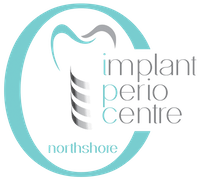Sinus Augmentation in North Vancouver
North Vancouver Surgical Centre For Implant & Periodontal Treatment
When molars are lost from the upper jaw, the maxillary sinuses, those air spaces on either side of the nose, can begin to enlarge. The shape and the size of an individual’s sinuses varies as it can also can become enlarged as you age. This enlargement causes further bone to resorb, leaving the thickness of the bone in the area of the missing molars and premolars to be exceedingly thin. This thin bone makes it very difficult to be able to place any dental implants in the back upper jaw.
A sinus lift, or sinus augmentation, is surgery that adds bone to the upper jaw in order to be able to place dental implants in the area of upper molars or premolars. The bone will be added between your upper jaw and the maxillary sinuses. To place the bone, your sinus membrane has to be "lifted."
X-rays are needed prior to the lift procedure to help Implant Perio Centre study the contour and shape of your jaw and sinus. This may require the use of a CT scan. This scan allows us to measure the height and width of the remaining jaw bone, but also to evaluate the health of the sinuses.
The procedure itself involves separating the delicate membrane from the floor of the maxillary sinus above the upper jaw in order to insert a bone graft and make the jawbone thick enough to support an implant. Various techniques for sinus lift bone grafting are utilized, all of which are relatively conservative in their approach. Our periodontists at the Implant Perio Centre will discuss all the various grafting options with you, as well as the types of grafting materials recommended to use in each individual case.
Once the bone is in place, and the bone graft material has been used to fill the gap left by the collapsing sinus, implants can be placed four to nine months later, allowing time for the grafted material to bond with the bone. Recovery times vary depending on the amount of bone material used in the procedure.


